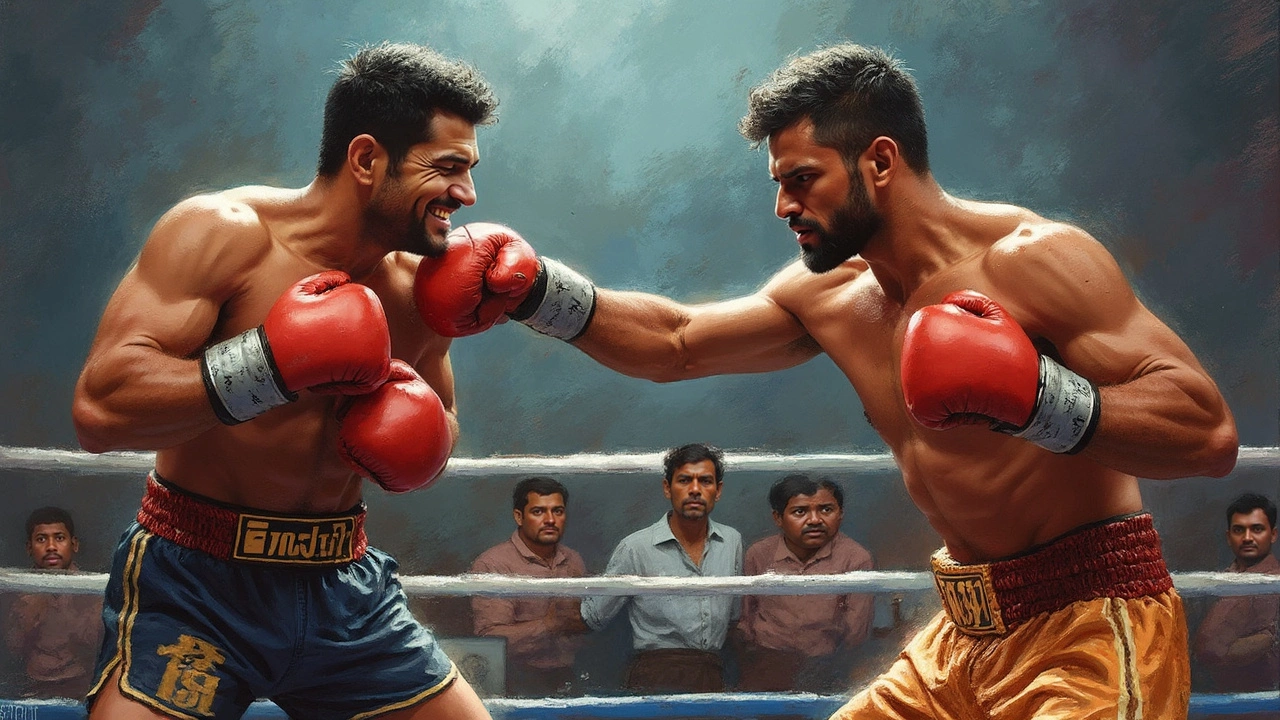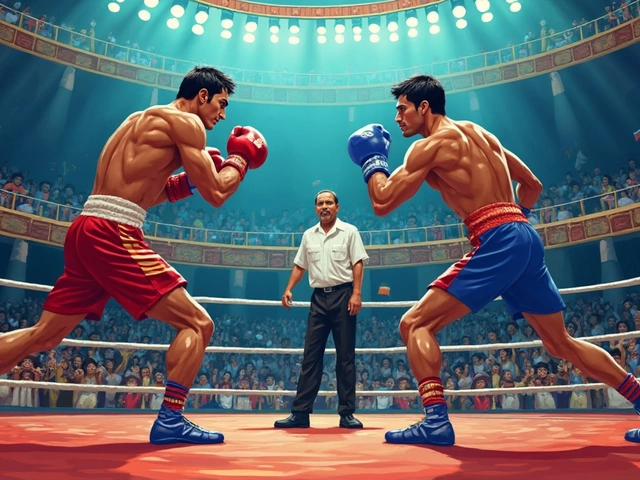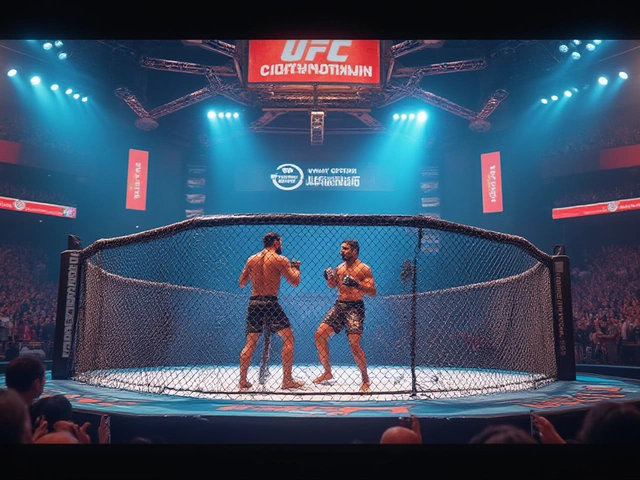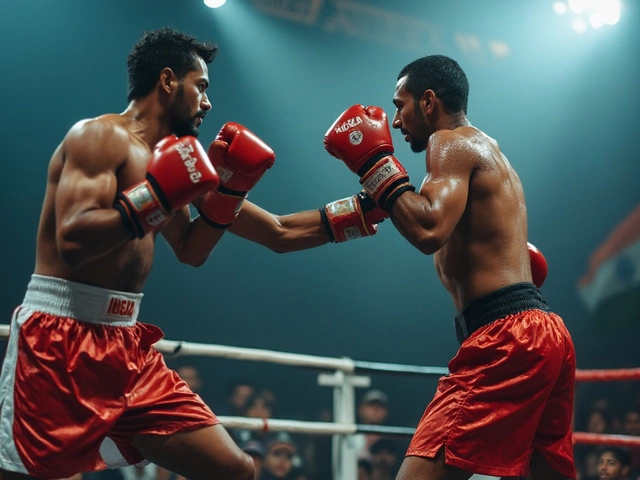Picture two fighters face to face in a cage. The bell rings. You watch their fists fly, and your first thought might be, “Hey, this is just like boxing!” But as knees crack, elbows swing, and one fighter shoots in for a takedown, you realize something’s up. Mixed Martial Arts, or MMA, takes the drama of boxing and tosses it into a blender with wrestling, jiu-jitsu, and just about every other way humans have figured out to fight. Calling MMA "just boxing" is like calling a smartphone "just a phone"—half the story, tops.
The Rulebook: How MMA Blends Multiple Disciplines
Let’s clear this up: boxing and MMA share roots but sprout wildly different branches. In boxing, you’re working with two weapons—your fists. No elbows, knees, kicks, or grappling. Your opponent can’t take you down and wrestle you. Matches take place in a squared ring. Fighters might hug it out (well, clinch) if things get close, but the ref breaks them up quick.
MMA, though, is a patchwork sport. Your fists are just the start. You can kick, elbow, knee, and—most importantly—wrestle and submit your opponent. Cages are the norm (those fences matter for strategy), and fights flow non-stop between stand-up and ground battles. UFC, the biggest MMA promotion, allows almost any technique except eye-gouging, groin shots, and a few other nasties. Got some wrestling skills? Bring them. Trained in judo? That might be your ticket to victory. Fought in Muay Thai? Those elbows and knees are suddenly legal weapons.
Different fighting styles shape every bout. You’ll see a Brazilian jiu-jitsu specialist trying to drag a striker to the ground. A wrestler forcing a stand-up brawler into clinches. Sure, they punch and trade blows, but it’s not “boxing with extras.” It’s a chess game where the pieces are always shifting and the rules let you move in more ways than you can count.
For many fans, the unpredictability is the draw. Khabib Nurmagomedov’s ground mauling, Anderson Silva’s unorthodox striking, Amanda Nunes dominating both on the feet and on the mat—all these moments could only happen with MMA’s big rulebook. Boxing, beautiful as it is, simply doesn’t allow for this mashup of movement.
Training Differences: Walking the Line Between Arts
Ever seen a pro boxer shadowbox for hours, then hit mitts until their arms fall off? Boxing training is unapologetically focused. Footwork, angles, combinations, head movement—every muscle honed just for striking with fists. Boxers do sprints, rope jumps, bag work, and sparring, but every drill points to landing the perfect punch or dodging the one coming for your chin.
MMA training is like juggling dynamite. Modern fighters have split days: striking one session, wrestling the next, hours dedicated to Brazilian jiu-jitsu, then maybe some Muay Thai or Sambo thrown in. You’ll find fighters drilling how to defend a takedown, then pivoting to work on triangle chokes or leg kicks. This cross-training is essential; if you have a gap in your game, you’re shark bait.
The complexity means MMA fighters rarely master everything. Conor McGregor, for instance, famously blended solid boxing with swift kicks. Khabib never had flashy stand-up, but his wrestling dominance broke opponents. Rose Namajunas brought high-level kickboxing plus slick submissions. These folks have to think about striking distance, then instantly swap to wrestling or submissions as situations change.
No joke, there are even different gloves: Boxing gloves are big, designed to protect hands and, believe it or not, soften blows a bit. MMA gloves? Tiny, four-ounce paddles, offering little padding. That changes defense entirely—a boxing guard just won’t cut it against elbows, kicks, and quick grappling shifts.
The point is, prepping for an MMA fight keeps coaches up at night. Game-planning isn’t just about a left hook. You might have to avoid a knockout punch, counter the clinch, sprawl to stop a takedown, escape submissions, and get back on your feet—sometimes all in one round. Combat IQ beats specialization here. Versatility pays huge dividends.
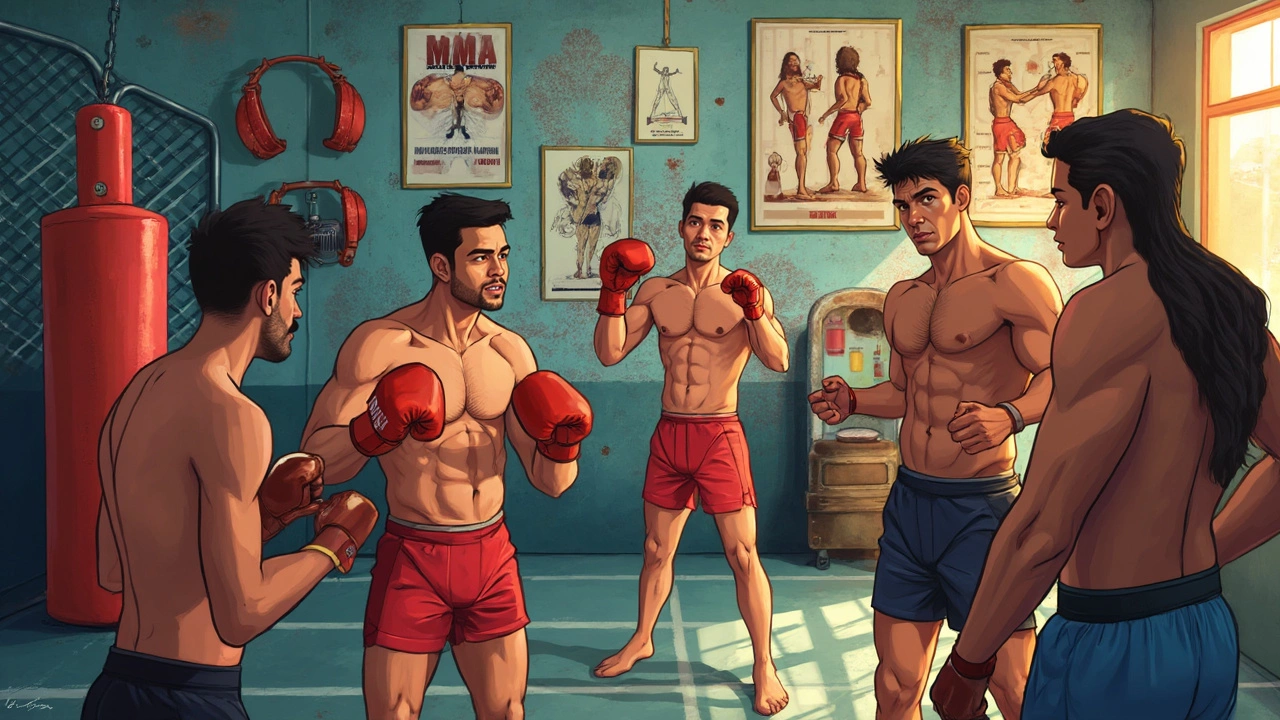
Strategy and Style: Why MMA Fights Look So Different
If you’ve only watched boxing, MMA bouts might look raw or even messy at first. In boxing, fighters stick to a tight stance, circle, jab, bob, and weave—eight or ten beautiful rounds dancing on the edge of danger. Every round is scored on precision, ring generalship, and defense.
MMA demands creativity—the best fighters are quick to adapt. An opponent with killer jabs? Chop down their lead leg with kicks. Grappler gunning for a takedown? Keep your range, sprawl hard. Look at Israel Adesanya: his kickboxing skills let him control the distance and crack counterstrikes. But when forced to the ground by powerful wrestlers, he has to flip the script and defend or escape.
Unlike boxing, MMA fighters adjust stances regularly. Some square up to check kicks or sprawl as a defense; others stay light and sideways, focusing on angles. The threat of takedowns changes how you move, keeping hands lower to sprawl or block kicks. And there’s the clinch—boxers break when hugged up, but in MMA, that’s prime time for knees, trips, or dragging an opponent into deep water on the mat.
Then there are submissions—a completely alien idea in boxing. You can win a fight not by knocking someone out, but by outsmarting them with a choke or joint lock. Frank Mir, a former UFC champ, was famous for bending limbs in odd directions; Ronda Rousey was nearly unstoppable with her armbar. Suddenly, fights end in a blink, and fans are left blinking in surprise.
Let’s not forget the environment. Caged fighters can use the fence to get up, trap rivals, or block escapes—a tool unknown to boxers. And MMA judges must weigh striking, grappling, cage control, and fight-ending attempts. A boxer can coast on points. An MMA fighter? Not so much—one mistake can flip everything, and the “lucky punch” isn’t the only threat.
History and the Evolution of Both Sports
Boxing rings go back millennia. Fists-only contests show up in ancient Greece, Rome, and have had professional rules for hundreds of years, especially after the Queensberry Rules made gloves and round limits standard. Boxing’s traditions run deep: think Ali, Tyson, Pacquiao, Mayweather. These legends built legacies on pure pugilism; fans love the chess-match simplicity—two warriors, two hands, one goal.
MMA’s formal history is newer but wild. The early UFC events in the 1990s looked like street brawls; no gloves, weight classes, or time limits. Curious fans tuned in to see what mattered more: sumo throws or karate kicks? Everything changed when specialists learned from each other. The first UFC champ, Royce Gracie, was a skinny Brazilian jiu-jitsu master. He kept humiliating giants with technique, not power—shocking everyone.
Today, you need a “mixed” style to survive. By the mid-2000s, it wasn’t enough to be great at one thing. The next wave, like Georges St-Pierre, could box, wrestle, and submit foes seamlessly. Now, kids grow up training for MMA—not just focusing on karate or taekwondo or wrestling, but blending everything. Science backs the rise too: sport-specific strength training, nutrition, and smart coaching help fighters go deeper than ever.
MMA isn’t just another fight sport. It’s an evolution—an answer to the age-old debate, “Which martial art is best?” You see traditions clash and combine—not just in the fighting, but in entrances, training, and even the swagger. And that’s why MMA promotions like UFC, Bellator, and PFL draw huge crowds, rivaling (and sometimes beating) boxing’s biggest nights.
The fighter mindset’s changed too. Former boxers entering MMA, like James Toney, struggled with the ground game. On the flip side, ex-MMA stars like Anderson Silva moved to boxing and did surprisingly well, showing MMA’s emphasis on adaptability pays off. Fans want action, unpredictability—and MMA delivers in spades, with knockout artists and submission wizards sharing the octagon.
So, is MMA just boxing? Not a chance. Boxing is a gorgeous, honed art; MMA is the wild cousin, rewriting the rules of what makes a great fighter. You can enjoy both—but don’t call them the same thing. Watch a full MMA event, see those kicks and chokes, and you’ll never mix the two up again.
